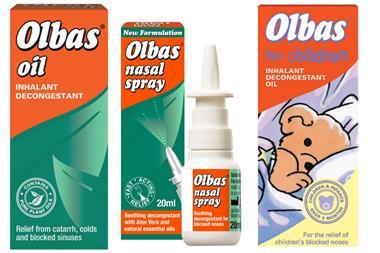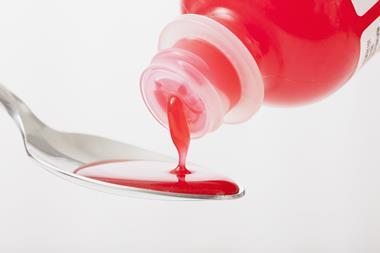Customers want the very best when it comes to feeding and treating their pets, with premium food and treats commanding big sales.
How much do your customers value their pets? At Harry Goraya’s Nisa Rosherville Post Office in Gravesend, Kent, it’s an awful lot. “We get customers who are more likely to spend more money on their dog or cat than on their own food,” asserts Harry.
One thing is for sure, the UK is packed with animal lovers. According to Nielsen data from 2016, 50% of UK households own a pet and Kantar Worldpanel research identified that there are nearly 18 million cats and dogs owned in the UK. All these four-legged friends make up a massive consumer base for convenience retailers to attract into their stores.
What’s more, pet owners spend more in store, too. The same study from Nielsen revealed that on average pet owners spent £782 more per year than non-pet owning consumers.
Pet care is keeping the tills ringing for Meeta Raja. “The category is doing very well at the moment – we have seen uplift of 5-10% after remerchandising,” reveals Meeta, owner of Best-one Raja Stores in Leicestershire.
Meeta’s store is in the heart of a local community where customers come in to top up on pet care essentials, and it is clear which lines are the most popular. She says: “Our most popular lines in dog food are the smaller tins and pouches of food from Nestlé Purina. I think those are most popular because our customers just want to pop in on their way home from work or from picking the kids up from the local school and top up, rather than carry large bulk or box products home.”
Hampshire retailer Meten Lakhani, who owns the St Mary’s Supermarket in Southampton, has noted gradual changes in the category over the past few years. He says: “The latest trends in the pet care category are that pouches and packet food are massively taking over from tins of food. We now stock a big variety of pouches, and they are very popular. Our most popular product is our 12-pack of pouches from Felix and Whiskas when they are on offer at £2.50 or £3.70. This is because they are brands that customers trust and which offer great value.”
In convenience, sales of single-serve cat food pouches alone are worth £79m, according to an IRI convenience study over the 52 weeks ending September 2016.
Mars Petcare adds ‘superfood’ brand for cats and dogs
The latest npd from Mars Petcare is a ‘super premium’ advanced nutrition dog and cat food.
Perfect Fit is targeted towards delivering high-quality nutrition and has been developed in collaboration with vets and nutritionists at the Waltham Centre for Pet Nutrition and Banfield Pet Hospitals. Through scientific research Mars Petcare has identified the five most common health needs of cats and dogs and developed a solution with the Perfect Fit Total 5 formula.
The cat products are available now in pack sizes of 190g (rrp £1.39), 750g (rrp £4.49), 2.8kg (rrp £12.99) and 7kg (rrp £29.99) in flavours from chicken to salmon and turkey, covering lifestages kitten, adult (1+) and senior (7+).
Perfect Fit dog products will launch later this month.
Brand manager Elen Gyulnazaryan says: “Super-premium dry products are a huge opportunity for retailers, and we estimate that the combined value of the cat and dog dry market will be well over £400m by 2020. We know that shoppers are willing to pay a premium for quality, and are more health conscious in all aspects of their lives. We’ve tapped into these trends and created what we see as a real ‘superfood’ brand for pets.”
Felix market development director Liz Wood points out this is more than four times the value of traditional multi-serve cans, worth just £17.9m at retail and declining by 8% per year. “Based on average feeding guidelines, a cat will consume close to 1,500 pouches of cat food each year, resulting in one of the most frequently repeat-purchased categories in grocery,” she says.
Pouches and sachet cat food are big sellers for Harry. “When it comes to cat food the single-serve pouches and sachets of food from Whiskas and Felix are our most popular and Sheba trays at two for £1, because of the simplicity of them and customers say that they provide a better portion size for their cat.”
However, when it comes to canines it’s tins that are in demand with Harry’s customers. “Our best-selling lines in dog food are our tins of everyday food from Pedigree when they are on promotion for two for £1, or Heritage brand tins which are three for £1.39,” he says.
Alongside foods, the other area that consumers will be turning to their local store for is treats. According to Mars Petcare UK head of corporate affairs Chris Dugmore: “Care and treats are fast-becoming the number one must-stock item for retailers, unlocking greater basket spend and encouraging those all-important impulse purchases. Treats exchanged between owners and their pets can enhance the strong emotional bond between them, as well as providing functional health benefits.”
He says the use of cat treats is increasing, with 45% of cats being fed in-between meals in 2014 compared with only a third in 2010.
Cotswold Raw rolls out sausage range
For owners who want to give their dogs the very best, Cotswold Raw has created a range of sausages.
Complete Meal beef and tripe sausages (rrp £4.95 1kg) include a full-bodied, higher-fat protein for dogs with higher metabolisms.
They are described as being loaded with beneficial digestive enzymes, essential fatty acids and healthy probiotics that can lead to improved skin and coats, cleaner teeth and an end to debilitating digestive disorders.
Cotswold Raw co-founder Chris Brierley says: “At Cotswold Raw we recognise that dogs were hunting long before words such as kibble had been invented. The fact that raw products aren’t heat treated means that the recipes retain a much greater proportion of their essential nutrients and taste notes, which mean less visits to the vet.
The sausage range comes in ‘foodie- themed’ transparent packaging that Brierley says marries easy product understanding with portion control and serving simplicity.
He adds: “From a store perspective, these perfectly-proportioned packs can easily be showcased in existing refrigerators.”
Meeta says that treats definitely add value to her offering. “By stocking a range of cat treats, it is a good way to encourage impulse purchases, as people will pick up a treat for themselves and, in turn, for their pet.”
Felix’s Wood adds: “Shoppers also enjoy treating their felines, with the treating sector now worth nearly £380m. Felix offers a range of popular treating products, such as Felix Goody Bags and Felix Crispies. As shoppers are continuing to look for ways to delight their cats with tasty meals from the Felix portfolio, we expect premium and treating to continue to grow in the coming year.”
Harry says that this rings true at his store. “We sell a lot of treats for cats, too, from Nestlé Purina and Mars Petcare, but our best-seller is in the dogs range, with Webbox chub rolls for £1 and Dentastix from Pedigree for £1. We have customers who are dog lovers who come in for a specific basket of items and end up picking up something for the dog on impulse, too, so by stocking a range of treats it is a good way to increase basket spend.”
Products that carry health benefits are in particular demand, according to Mars Petcare. Dugmore says: “There is an increasing demand for oral care products as owners become more concerned with the oral health of their pets. Gum disease is the most common disease within dogs, particularly small dogs. Mars Petcare’s Oral Care & Treats continues to drive this category with its Pedigree DentaFlex, a longer-lasting chew that helps reduce the build-up of plaque and tartar, while Mars Petcare’s Pedigree Small Dog caters to the specific nutritional needs of small dogs including Puppy Tasty Bites, and Whiskas DentaBites for Kittens.”
Wood says that the other major trend driving growth in the category is premium food. “Over the past year, premium has been a persistent trend. The fastest-growing range of the Felix portfolio, Doubly Delicious, reflects this. It is a ‘super-premium’ offering that has grown 28% in the past year,” she says.
While there may be no shortage of new products on the market, deciding which to stock when space is tight can be tricky. Before jumping in, Harry Goraya consults his customers. He says: “We have a good relationship with our local community and I often have conversations with customers who own pets and ask them what their pet likes. We like to give them a wide choice and stock some of the latest innovative lines from the big brands.”
Harry finds his customers look for pricemarks and price promotions. “Price is still a very important factor. We have customers who come in and really respond to our PMPs of dog and cat food and we still get lots of sales of our value for money Heritage range, too.”
When it comes to merchandising pet care, it is imperative to stock the best-selling lines, says Dugmore. He says: “Stock a variety of pack formats and sizes, including singles and multipacks, to satisfy all of your customers’ needs. Position low-penetration sub-categories next to highly penetrated sub-categories to drive trial. Remove barriers to incremental purchase by stocking a range of products in store, secondary siting and using navigation/education tools. Display core favourites such as Whiskas pouches in prime locations such as wall displays.”
Meeta Raja experienced sales uplift at her Best-one store by working with suppliers. She says: “My advice to retailers would be to get help from reps from the big companies because they know what they are talking about and can help to maximise store potential by making small changes. We had the category remerchandised by Nestlé Purina, who reduced our number of big boxes and bulk products and put pouches at eye level.”
Harry has a three-metre fixture and advises retailers to stock a varied range to unlock sales. He says: “Speak to your customers and find out what they buy and what their pet prefers and get the range right by stocking the big brands along with some own label lines at different price points, with a strong PMP range. That way customers have plenty of choice and the store becomes a destination for those customers.”
































No comments yet